INTERNATIONAL. In what will certainly rank as the most enduring success of the inaugural Moodie Davitt Virtual Travel Retail Expo, the event will transform the lives of around 120 children and their families by helping to fund the work of international cleft charity Smile Train.
As reported, The Moodie Davitt Report is to fund a cleft operation through Smile Train for every registered exhibitor at the pioneering event.
Smile Train has supported over 1.5 million cleft surgeries since 1999. Every five minutes Smile Train-supported cleft treatment helps a child in need. Some 200,000 babies are born every year with cleft lips and/or palates. US$250 funds the cost of the 45-minute cleft surgery that transforms the life of a child – and that of his or her family.
“Though we may not be able to travel right now because of COVID-19, this virtual event proves that we can all still come together to do some real good for children in need around the world,” said Smile Train President & CEO Susannah Schaefer.
“All of us at Smile Train are thrilled and honored to be partnering with The Moodie Davitt Report on the Virtual Travel Retail Expo, and I want to send my personal thanks to Martin Moodie for his special dedication to changing the world one smile at a time, now and always.”
To mark the partnership with the Virtual Travel Retail Expo, Smile Train produced the following vivid portray of its work and how it has changed the lives of so many around the world.
Smile Train: The Investment of a Lifetime
How do you define a good investment? Is it one that pays for itself or doubles in value in a short time? What if there was an investment that paid for itself 170 times over, saved children’s lives, and yielded higher returns the more people invested in it? It might seem too good to be true, but it’s real. And like so many other revolutionary discoveries, this investment was born when one intrepid individual realised that a traditional model was inefficient, unsustainable, and sometimes even destructive.
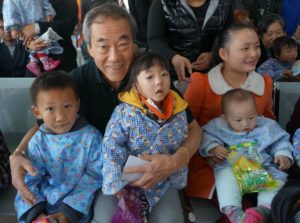
The late Charles B. Wang founded an organisation that would change the course of over 1.5 million young lives in ensuing years
That intrepid individual was the late New York-based tech entrepreneur Charles B. Wang. His revelation came while serving on the board of a US charity known for flying American doctors on medical missions to perform cleft surgeries in developing countries.
Wang had no experience with clefts or cleft charities before joining their board, and when he traveled to see the organisation’s work in the field, he was left standing slack-jawed at the sight of babies who had been on the brink of starving to death, children who had spent their lives sick, shunned, and rejected — sometimes even by their own families — leaving the mission tent less than an hour later filled with hope and wearing smiles warm as the tears flowing down their mothers’ cheeks.
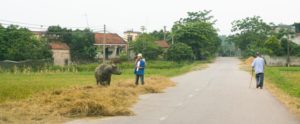
A scene from rural Vietnam, where Charles Wang realised a different business model was needed to ensure that any child with a cleft could receive treatment
The faces that stuck with him most, however, belonged to the children who never made it to the tent. After the mission packed up at the end of the week and began to drive away, Wang looked out his window and gasped to find children with untreated clefts desperately chasing after their van.
The medical volunteers explained that of the 600 or so children who came to the tent seeking treatment each mission, they typically only had time to care for about 150 of them; these children had simply come too late. Wang found this unacceptable, and those terrified children running after the van like their very lives and futures depended on it haunted him for days and weeks afterward.
Ever the entrepreneur, he was determined to find a better way. One that was sustainable, that built up — rather than ignored — local healthcare systems and helped children when the time was right for them, not foreign doctors. One that, most of all, understood that every child with a cleft, even those at the back of the line, was worth the investment.

Local doctors all around the world have developed cleft expertise thanks to the support, training and funding of Smile Train
He found the solution in the ancient wisdom of Confucius: “Give a man a fish, and you feed him for a day. Teach a man to fish, and you feed him for a lifetime.” Through this adage, Wang understood that empowering local healthcare professionals with training and the latest technology, then providing those trained with opportunities to, in turn, train others, would make high-quality cleft care possible all over the world 365 days a year while also building up local medical systems.
He called it the ‘teach a man to fish model’ and pitched it as a pilot programme to the mission organisation. After some back-and-forth, they rejected it. But Wang believed in his idea and didn’t get to where he was in life by not taking risks on ideas he believed in. He promptly resigned from the board of that organisation and founded one of his own. He called it Smile Train.
First Stop: China
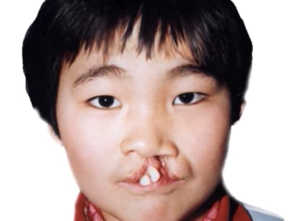
Wang Li, Smile Train’s first patient, pictured at nine years old. Her life of shame and harassment was about to be changed forever.
Meanwhile, over 7,000 miles away in Nanjing, a nine-year-old girl named Wang Li was living in despair. Born with a cleft, she spent most of her childhood confined to her bedroom, the one place on earth she felt safe, where no one gawked at or harassed her. The abuse was so bad she couldn’t even go to school.
Her parents were desperate to help but could barely afford to put food on the table, let alone pay for the surgery she needed. Then, when Wang Li was nine, a rubbish collector noticed her cleft and told her father that he had just read in the newspaper about a new organsation funding cleft surgery at a local hospital. Her father wasted no time. After a long journey to the capital district, Wang Li was approved to become Smile Train’s first patient.
An Investment Matures
Since the day in 1999 when Wang Li smiled at herself in the mirror for the first time, Smile Train’s donors have continued and furthered Wang’s investment in the potential of every child with a cleft, powering it to become the largest cleft charity on earth. In that time, Smile Train has partnered with more than 2,100 healthcare workers in 1,100+ medical centers across more than 90 countries to sponsor life-changing treatment for 1.5+ million children with clefts, more than every other NGO combined.

René had learned to live on porridge and tapioca, but he never learned to live with no-one understanding him when he spoke. Since his life-changing surgery, he wants to be a cleft surgeon like his role models at Smile Train.
Yet, of all those 1.5+ million patients, no-one demonstrates the truly transformative potential of Smile Train’s investment in local cleft care quite like René. Like so many other babies born with a cleft, René was constantly hungry and at severe risk of malnutrition. Hope seemed to come from above when a mission group landed near his small town in Ecuador offering to perform free cleft surgeries.
Thankfully, his family arrived early enough for him to receive the surgery he needed to save his life; unfortunately, however, his palate reopened shortly after the mission group flew home, creating a hole in the roof of his mouth called a fistula. Unable to eat solid foods once again, René learned to live on porridge and tapioca, but he never learned to live with no-one understanding him when he spoke. He grew frustrated and began to act out.
But all the words in the world couldn’t have prepared him for what came next. When he was three, his mother passed away from bone cancer, a tragedy made unspeakably worse when his father abandoned him and his siblings soon after, never to return. René’s seven-year-old sister, Cristina, was now forced to drop out of school to work as a nanny and a cleaner so the rest of the family could survive.
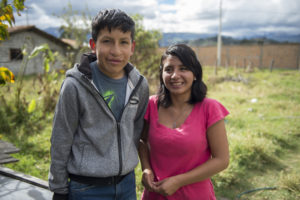
After his mother passed away when he was just three and his father abandoned the family, René was looked after by his then seven-year-old sister, Cristina, who left school to work as a nanny and cleaner to support them and their other siblings
Starting school a few years later offered René no relief — like Wang Li and countless other children with untreated clefts, he was mocked every day for the way he looked and spoke. But no matter how bad the taunting got, he refused to miss a day of school because he understood, even as first-grader, that Cristina was sacrificing her own schooling to give him a better life.
This arrangement continued for several years. Then, one day, René heard on the local news that an organisation called Smile Train was partnering with Clínica Santa Ines, a local medical group in the nearby town of Cuenca, to provide cleft surgeries and other essential cleft care services like speech therapy 100% free.
Care They Could Relate To
Unlike mission-based organisations, Smile Train’s local model allows it to train and empower local professionals, providing ongoing non-surgical forms of essential cleft care like pre-surgical nutritional support, speech therapy, orthodontics, psychosocial counseling, dental care, and more to patients in need at absolutely no cost to them. It’s a big investment, but it pays even bigger dividends.

Smile Train partner doctors Cristian and Andrea Astudillo fulfilled their promise to René that after a lifetime of struggle, the hole in his mouth would finally be healed.
For René and Cristina, this model introduced them to another brother-sister pair, Smile Train partner doctors Cristian and Andrea Astudillo. When they met René, the first thing they did was promise him that, after a lifetime of waiting and struggle, the hole in his mouth would finally, permanently, be healed.
But that was only the beginning. Because the Astudillos not only spoke René’s language but lived nearby, they were able to form a trusting relationship with him and his sister. And once they learned more about their circumstances, they arranged transportation for René to regularly travel to Cuenca for speech therapy and rallied the local medical community to ensure Cristina and René each received the nutritional and dental care that had been beyond their reach since their mother passed away.
In the years that followed, Drs. Cristian and Andrea regularly checked in with René to make sure he attended every speech session. This fretting was mostly to reassure themselves, as every time they spoke, René told them loud and clear how much he loved speech therapy and how it made him feel more confident.
René now wants to be a cleft surgeon like his role models, saying, “I know that there are many other children out there living with untreated clefts like me, and I want them to know that they are not alone and there are people out there willing to help them.”
Delivering on Dreams
This is the advantage of the ‘teach a man to fish’ model. Because Smile Train and its donors invested in local healthcare workers, they could fully invest in René, providing this orphaned boy with all the medical care and emotional attention he needed to go from struggling to stay in school or even make himself heard to believing he can become a surgeon.
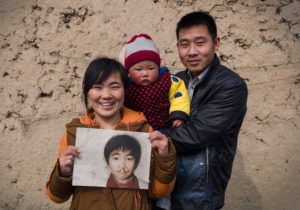
Wang Li today at home with family – husband, son and mother

Flashback to 2007 when Wang Li made a surprise guest appearance at The Moodie Report/Hugo Boss Smile Train fundraiser in Hong Kong. Her speech, made shortly after guests
It paid off for Wang Li, too. Her new smile allowed her to re-enroll in school. The strange looks from others disappeared and her confidence grew. In years that followed, she found love, married, and had a son, who she named Xiao, or ‘Smile’. Her family recently moved to Hangzhou and started their own delivery business — which was soon designated the official package carrier in the area. Even now, more than two decades later, she attributes her success to the investment Smile Train made in her, the surgery that freed her to get an education, make friends, and live the life she dreamed of.
[Click on the icon to watch the remarkable story of Wang Li]
Exceptional ROI
Exceptional as Wang Li and René are as people, the numbers prove their stories are actually far from exceptional. A recent independent study quantified the economic value of global cleft surgery using patient data from Smile Train . For every US$250 invested in a single cleft surgery, the researchers found that as much as US$42,000 is put back into the local economy as former cleft patients go on to contribute to economic productivity and lead full lives in their communities — that’s nearly 170 times return on investment!
Charles passed away in the fall of 2018. He never got to see little Xiao grow up or hear René’s incredible story. But his ingenious model lives on every day in the more than 90 countries with revitalised healthcare systems, in the thousands of medical workers empowered with the latest knowledge and technology, and most of all, in the lives of more than one and a half million children around the world who now know they have what it takes to change the world, one smile at a time.
How do you define a good investment?
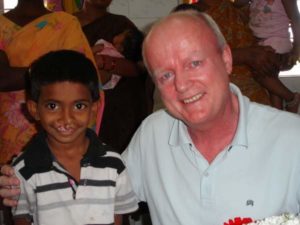
July 2007 and Martin Moodie meets Anji, a little boy who was about to be operated on by the Smile Train team at Nizam’s Institute of Medical Sciences in Hyderabad, India. “He had eyes as deep as the Indian sub-continent and a smile as wide as Hyderabad – especially when I suggested he would one day play cricket for India,” I wrote. Anji was due to be operated on the day after my visit but the procedure had to be delayed after the medics discovered that he had a heart condition. In August 2008, his heart issue fixed, little Anji returned for his life-changing cleft surgery. The transformation (below) was extraordinary. Maybe now he will some day play cricket for India.
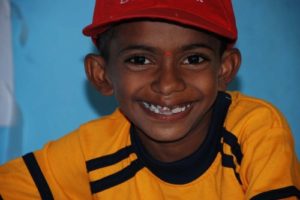

[Make the investment of a lifetime. Just US$21/month is all it takes to sponsor life-changing cleft surgery for one more child every year. Visit smiletrain.org to make a gift today.]

